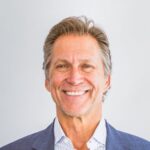Sustainable Meaningful Differentiation

More than any other time in history, marketers and executive teams are wrestling with how they can make meaningful connections with the people who matter to them and sustain the connection.
Today’s brandscape is amped and ready for change because of the diverse, expanding ways people can and do consume information. An impressive number of people have the ability and motivation to engage with and digest a vast array information; however, a growing number are frustrated and overwhelmed. The implication for brands is that differentiation is fleeting.
Meaningful Differentiation
Sustainable meaningful differentiation is a hallmark of strong brands and it is under attack like never before. Let’s imagine for minute that Brand X has carved out a clear, meaningful position in the marketplace and in the minds of its target audiences. The strategy is clearly working as measured by adopters―the people buying stuff―and by healthy margins and a whole host of other KPIs. But, with the availability of the latest technologies, online tools, advanced simulation techniques, community forums, and other resources, a rival can deconstruct, reconstitute, and iterate―at lightning speed―in order to neutralize Brand X’s advantage and do it one better. Or, the rival can access cheap capital from a multitude of investment vehicles―some even crowd sourced―to buy a company or capability that then turns Brand X’s differentiation into the equivalent of white bread. Of course, there are other, more unfortunate rivals who can’t keep up, so they either close up shop or somehow reinvent themselves. This dynamic process, which is fundamental to our marketplace, can be summed up in two words: mean reversion. In other words, there exists a very natural process in our markets for differentiation to diffuse, and for competitors, to reach a point of “sameness.”
At Monigle we have the opportunity to talk one-on-one with hundreds of executives each year about their business strategies and vision. Of course, brand strategy should reinforce, clarify, and sometimes lead business strategy, which is why we spend the preponderance of our time on this very topic when interviewing company leaders. And, being passionate students of branding, we fall asleep many a night with the latest brand book, white paper, research, or article on our chest. What we have increasingly found is any given strategy, vision, or mission statement feels like a ‘fill in the blank’ exercise rather than a bold strategy to leverage unique capabilities and insights to carve out a piece of mind space that can be sustained over many years rather than months.
So how do we break this natural market phenomenon? How do we create brands that stand for something? And, how do we sustain a market advantage over time? The answer is to become passionate about and embrace imperfection. Yes, you heard right….imperfection.
This is a concept learned about and iterated from late night reading. In this case, the source of inspiration was a McKinsey paper on business strategy. The core idea is that in a perfect market with multiple competitors, there is natural pull toward a reversion to the mean. One company breaks away, others copy, and others go out of business or reinvent themselves…all leading to convergence. Your meaningful differentiation is the imperfection that you are injecting into the natural market forces. It’s like Neo in the Matrix, right?
But how do you make your imperfection sustainable? The answer is found in OZ. Not the land of ruby slippers and creepy monkeys that fly, but OZ, as in Opportunity Zone. Routinely, through the research of competitive forces, customer drivers, market dynamics, and deep self-analysis, companies will seek out brand nirvana in the overlap of concepts that are different, meaningful, and legitimate. The more enlightened may even add another overlapping circle to represent concepts that are sustainable. However, if most companies are performing these same exercises then it is no surprise that sameness is the result. The key is to dig deep with the overlap of these circles to find your special place…your OZ. This can be done through engaging and challenging techniques and dynamic workshops, but the Emerald City is only discovered by those who are persistent, who have a willingness to become immersed in the journey, and who are highly tolerant of new, possibly counter-intuitive ideas and the connected debate.
You know that you have found OZ, when your collective comfort zone has been breached, when eyes come to life, and when executives feel challenged and excited about the breadth of the concept and by the operational, cultural, and strategic implications that are imperative if the strategy is adopted. Importantly, they remain engaged in the journey to continue discovering imperfections that pivot off of the big idea. These ongoing bursts of deliberate imperfections in the market is how you counter the reversion to mean and establish domain over the Matrix.
Rick Jacobs is a Principal at Monigle and he’s definitely one of the Wizards of our OZ.



